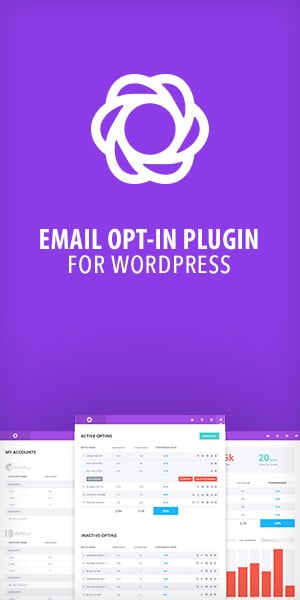Manage finances for small business effectively, and you’ll join the 40% of small enterprises that achieve profitability within five years. This guide explores essential strategies like budgeting, cash flow management, and expense tracking to ensure financial stability and growth. By mastering these financial tools, you can overcome challenges and drive your business toward long-term success.
Understanding Small Business Financial Management
Navigating the financial management landscape is crucial for small business success. It involves planning, tracking, and strategizing to maximize profitability and growth. Let’s delve into essential aspects small business owners must understand to keep their finances on track.
Importance of Financial Planning for Small Business
Financial planning is the backbone of a successful small business. It provides a roadmap for managing resources and achieving business goals. With a solid financial plan, businesses can anticipate challenges, allocate resources effectively, and make informed decisions.
- Risk Management: A well-structured plan identifies potential risks and prepares strategies to mitigate them.
- Cash Flow Management: Ensures adequate cash flow to meet operational expenses and invest in growth opportunities.
- Goal Alignment: Aligns financial goals with overall business objectives, ensuring coherent growth strategies.
Key Financial Terms Every Small Business Owner Should Know
Mastering essential financial terms empowers small business owners to communicate effectively with stakeholders. Here’s a quick rundown of critical terms:
- Revenue: The total amount of money generated from sales or services.
- Expenses: Costs incurred in running the business, including fixed and variable costs.
- Profit Margin: The percentage of revenue remaining after all expenses.
- Cash Flow: The net amount of cash being transferred in and out of the business.
- Assets and Liabilities: Assets are resources owned by the business; liabilities are obligations.
Creating a Financial Management Strategy for Small Business
An effective strategy ensures long-term business viability and growth. Here’s how to develop one:
- Assess Financial Health: Conduct a comprehensive analysis of financial statements to understand the current position.
- Set Clear Objectives: Establish short and long-term financial goals aligned with your business vision.
- Budgeting and Forecasting: Implement a budgeting process and use forecasting tools to predict financial trends.
- Invest in Financial Education: Continuously educate yourself and your team on financial literacy and market trends.
Effective Budgeting Techniques for Small Businesses
Budgeting is a vital part of financial management, providing a framework for allocating resources and tracking performance. Let’s explore techniques to create and manage an effective budget.
How to Create a Business Budget Plan
Creating a business budget involves setting clear financial targets and monitoring progress. Here are steps to create a robust budget plan:
- Identify Revenue Sources: Analyze past revenue streams and predict future income.
- List Fixed and Variable Costs: Document all business expenses, distinguishing between fixed and variable costs.
- Set Financial Goals: Define financial targets for revenue, expenses, and savings.
- Allocate Resources: Distribute financial resources according to priorities and goals.
- Review and Revise: Regularly review the budget and make necessary adjustments to stay aligned with business objectives.
Monitoring and Adjusting Your Budget for Business Success
Budgeting is an ongoing process that requires regular monitoring and adjustments. Here’s how to keep your budget on track:
- Track Expenses: Use accounting software to track expenses and compare them against the budget.
- Analyze Variances: Investigate significant deviations from the budget to identify potential issues or opportunities.
- Adjust as Needed: Revise the budget based on analysis, ensuring it reflects the current business environment.
- Engage Your Team: Involve your team in the budgeting process to foster accountability and innovative solutions.
Benefits of Budgeting for Small Business Growth
A well-structured budget is instrumental for small business growth. Here are some key benefits:
- Financial Control: Provides control over finances, ensuring resources are used effectively.
- Improved Decision-Making: Facilitates informed decision-making by offering a clear picture of financial health.
- Risk Mitigation: Anticipates potential financial challenges and prepares strategies to address them.
- Strategic Planning: Supports long-term strategic planning and growth initiatives by aligning resources with goals.
Essential Financial Tools for Small Businesses
Utilizing the right financial tools streamlines operations and supports informed decision-making. This section explores key tools every small business should consider.
Choosing the Right Accounting Software for Your Business
Choosing the appropriate accounting software significantly impacts business efficiency. Consider these factors when selecting software:
- Business Size and Needs: Ensure the software meets the specific needs and scale of your business.
- Features and Functionality: Look for essential features like invoicing, payroll processing, and financial reporting.
- User-Friendly Interface: Select software that is easy to use and offers customer support.
- Budget: Consider cost-effectiveness and whether the software fits within your budget.
- Integration Capabilities: Ensure the software can integrate with other tools and applications you use.
Utilizing Financial Reports for Better Business Decisions
Financial reports provide valuable insights into business performance. Here are common reports and their uses:
- Income Statement: Shows profitability over a specific period, helping assess revenue and expenses.
- Balance Sheet: Provides a snapshot of assets, liabilities, and equity at a given time.
- Cash Flow Statement: Tracks cash inflows and outflows, crucial for managing liquidity.
- Expense Report: Analyzes business spending patterns, identifying areas for cost savings.
Leveraging Financial Forecasting Tools for Small Business Stability
Financial forecasting tools help predict future financial conditions and trends. Here’s how they contribute to business stability:
- Scenario Analysis: Allows businesses to explore various future scenarios and their financial implications.
- Resource Allocation: Aids in effective resource allocation by predicting future needs and opportunities.
- Performance Tracking: Compares actual performance against forecasts to identify improvement areas.
- Strategic Planning: Facilitates long-term strategic planning by providing insights into potential challenges and opportunities.
Conclusion
Understanding financial management is crucial for small business success, requiring effective financial planning and familiarity with key financial terms. Creating a well-structured financial management strategy is essential for long-term growth. Budgeting techniques, such as developing and adjusting a business budget plan, play a significant role in fostering business success and facilitating growth. Incorporating financial tools, like the right accounting software and financial reports, aids in making informed business decisions. Leveraging financial forecasting tools ensures business stability by providing insights into future financial scenarios.
FAQ
What are the essential financial management tips for small businesses?
Small businesses should focus on maintaining accurate financial records, separating personal and business finances, and regularly reviewing financial statements. It’s crucial to set clear financial goals and create a realistic budget that accounts for both fixed and variable expenses. Investing in financial education and seeking advice from financial advisors can also prove beneficial.
How can small businesses effectively track and manage cash flow?
Monitoring cash flow involves creating detailed cash flow statements to understand the inflow and outflow of cash. Businesses should forecast cash flow to anticipate financial needs and identify potential shortfalls. Implementing invoicing software and setting clear payment terms can help ensure timely payments from clients and maintain liquidity.
What budgeting strategies can help small businesses achieve financial stability?
Creating a flexible budget that adapts to changing business conditions is key. Prioritize expenses that directly contribute to revenue growth and set aside a portion of profits for emergencies. Regularly reviewing and adjusting the budget ensures alignment with business objectives, while controlling costs can help maximize profit margins.
How do small businesses plan for taxes to ensure compliance and savings?
Understanding tax obligations and deadlines is crucial for compliance. Businesses should keep detailed records of all financial transactions and expenses to maximize deductions. Consulting with a tax professional can provide insights into tax-saving opportunities and help develop a tax strategy that aligns with the business’s financial goals.
What are common financial challenges faced by small businesses and how to overcome them?
Small businesses often face challenges such as limited access to capital, inconsistent cash flow, and managing expenses. Overcoming these requires building a strong credit profile, diversifying income streams, and implementing cost-control measures. Networking with other entrepreneurs can also provide valuable insights and resources.
How can small businesses leverage financial software for improved financial management?
Financial software can automate bookkeeping, streamline invoicing, and provide real-time insights into financial health. Choosing the right software involves assessing business needs and selecting features that enhance efficiency, such as budget tracking and expense management. Regular software updates ensure data security and optimal functionality.




